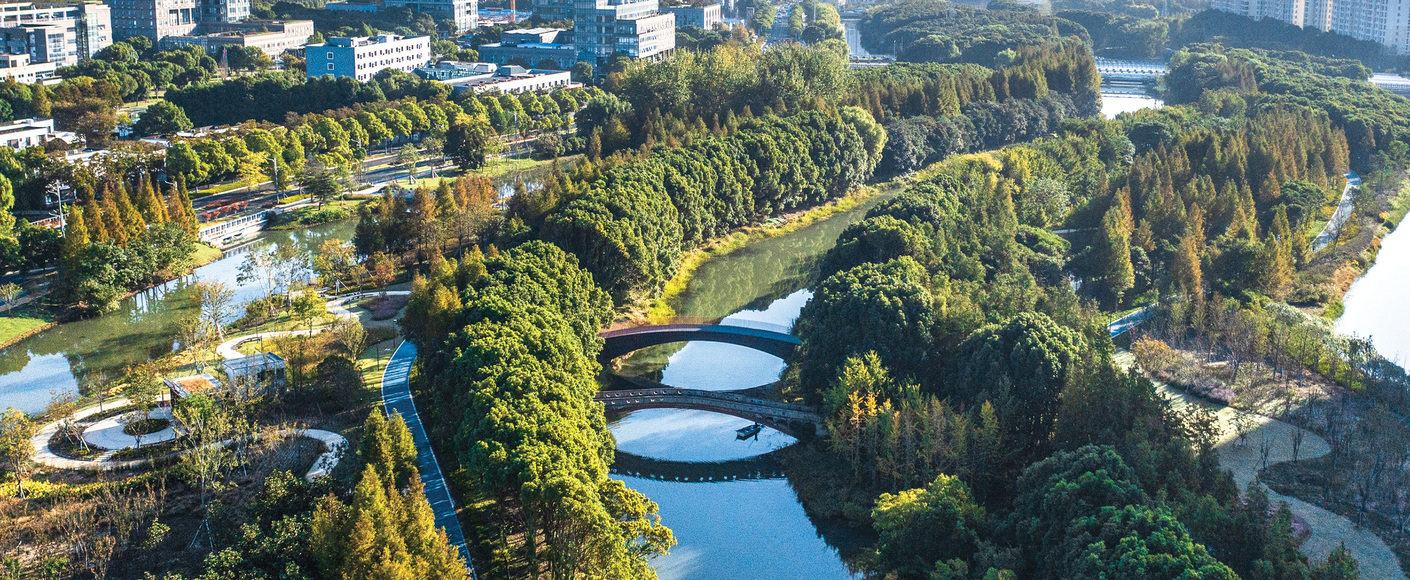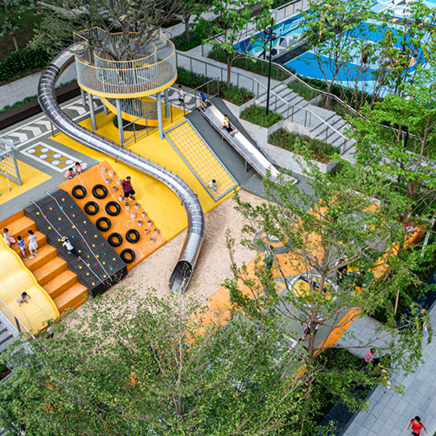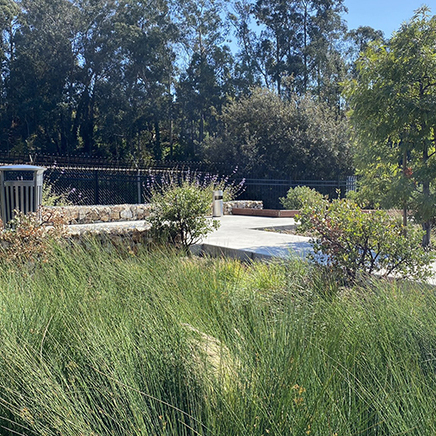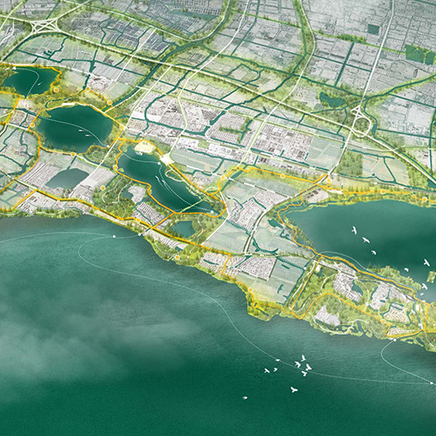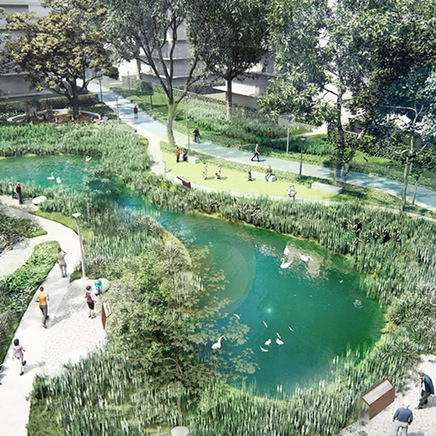MIAOJING RIVER: FROM A HIDDEN TREASURE TO ECOLOGICAL INFRASTRUCTURE
KUNSHAN & MIAOJING RIVER
Kunshan City, a watertown near Shanghai, has a rich history. Its canals cover 8,000 hectares, driving its economy with innovative industries.
Kunshan West is a growing region between Kuilei Lake and the old town. It has a core axis connecting amenities like a retail center, Forest Park, and sports centers. Miaojing River serves as an ecological connection with water channels and trees, creating a green area in the urban setting.
Miaojing River became open space after the aqueduct was replaced. Our team participated in a master plan competition, aiming to bring ecological value. The design was preferred by the government and shared with the public. A local team was formed to implement the master plan.
DESIGN STRATEGY

While years of isolation created a unique and forgotten nature in the region, it also led to various issues identified by the design team. Site visits and studies revealed no public access, dense forests with single species of trees, low diversity, and unhealthy riparian habitat due to steep slopes.
The design objective aims to transform this hidden treasure into a public ecological spine in Kunshan West District while preserving its natural and poetic character. The focus is on enhancing connectivity to neighborhoods, restoring a healthy and resilient ecology, and providing ecosystem services to the communities from cultural and social perspectives.
ACCESSIBILITY
The continuous trail system connects Kuilei Lake Area to Forest Park while minimizing impact on existing vegetation. It accommodates two-way jogging, biking, and strolling, with narrower paths for quiet and meditative settings.
Tunnels and underpasses are strategically placed to address street grid interruptions, and bridges are designed to harmonize with the surroundings. Existing bridges with safety concerns are preserved for their historical value, while new ones have gentle curves to accommodate dredging boats and simple brown metal railings.
Key intersections feature entries with parking, bike rental, cafe kiosks, and resting areas for pedestrians and vehicles. These areas provide light refreshments, seating, and serve as entry points to the park.
Permeable and elevated surfaces are utilized where possible. Metal grate platforms offer overlooks, allowing vegetation to grow and blend with the structure. Transparent metal mesh railings enhance the immersive nature experience for visitors.
ECOLOGY
To enhance forest ecology, diverse ecological zones are introduced to counter the mono-cultured forest. Multi-layered vegetation is incorporated along trails and in areas where dense trees are thinned out. Open fields are seeded with various grasses to create wet prairies, and selected water edges are re-graded to support wetland planting. Bioswales are implemented as part of the green infrastructure strategy, contributing to elevated ecological services that improve city resilience and mitigate urbanization.
These ecology-driven approaches have garnered positive reception from local communities, evident in increased visitor numbers and shared content on social media. The park's seasonal transformations, from flowering springs to waving grassy meadows in summer, vibrant fall foliage, and even winter snowscapes, have attracted visitors. The local communities, accustomed to heavily man-made urban environments, have shown a shifted perception and appreciation for ecology. This perception and community appreciation are as significant to the design team as the success of the ecological conditions.
PROGRAMMATIC VIBRANCY
The design of the Miaojing River Corridor aims to enhance ecological health and create a culturally and socially vibrant public space. Program areas are strategically placed along the corridor, considering adjacent land uses and prioritizing proximity to neighborhoods, while preserving central areas for wildlife and existing vegetation.
Nearby residential neighborhoods benefit from Play Areas, Picnic Lawns, and an Ecological Education Center. For education and research institutions, a Forest Amphitheater and Park Cafe, along with hidden viewing platforms, offer gathering and strolling opportunities. Each major program area is accompanied by amenities such as restrooms and bike racks.
Seating nodes are placed throughout the corridor for visitors to rest, and wayfinding and educational signs are designed to provide a sense of arrival, directions, and increase public awareness about sustainability and the significance of the water system in the region.
After its completion and opening as a public space in early 2022, it has become a popular and well-utilized public space in Kunshan. Community events such as concerts, daily strolling, jogging, and biking take place on both weekdays and weekends. This once-hidden treasure is now being embraced, appreciated, and shared with the public, serving the community ecologically and culturally. It also shows evidently that the ecological, social, urban infrastructures can be designed holistically and provides positive impacts on all facets.

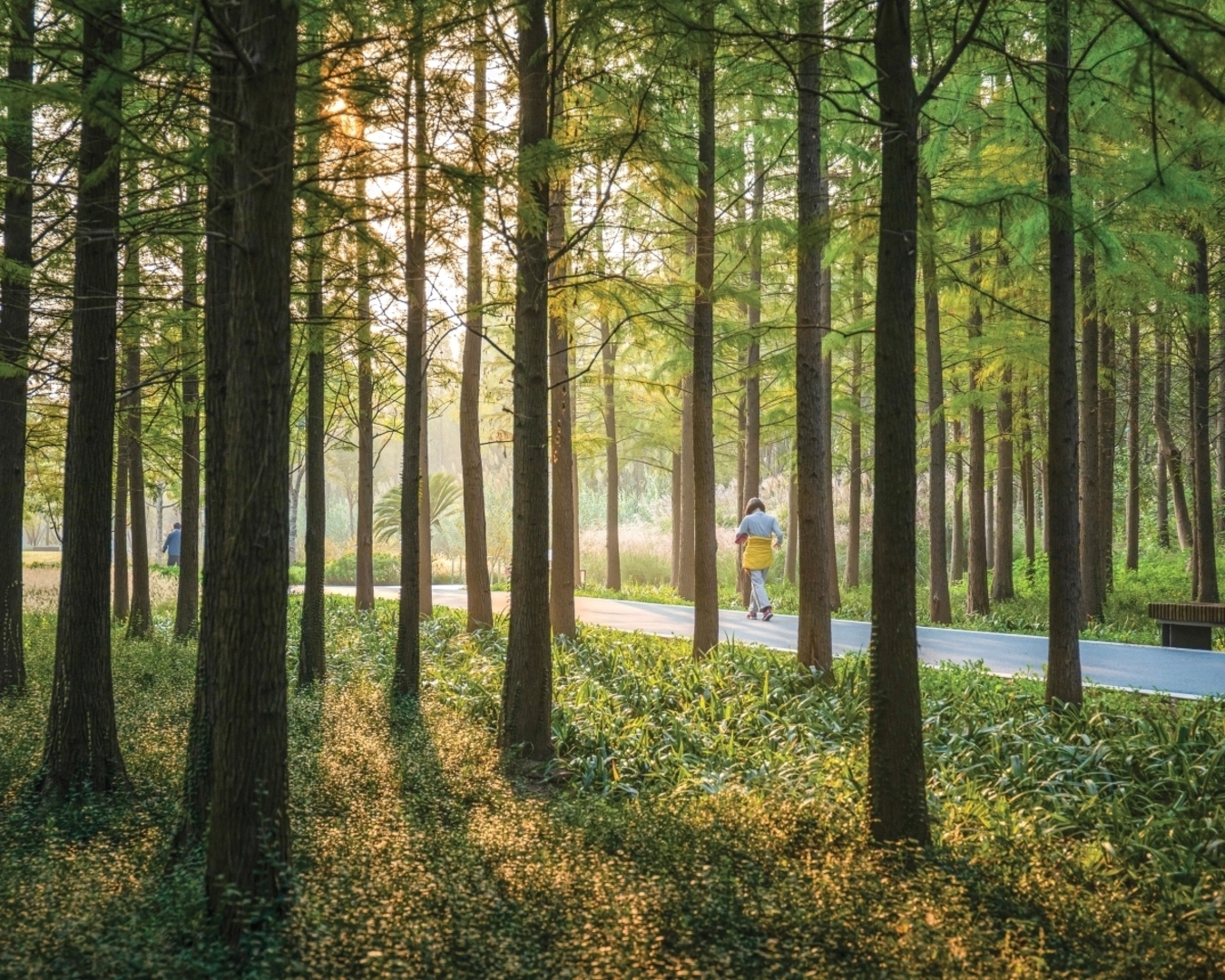
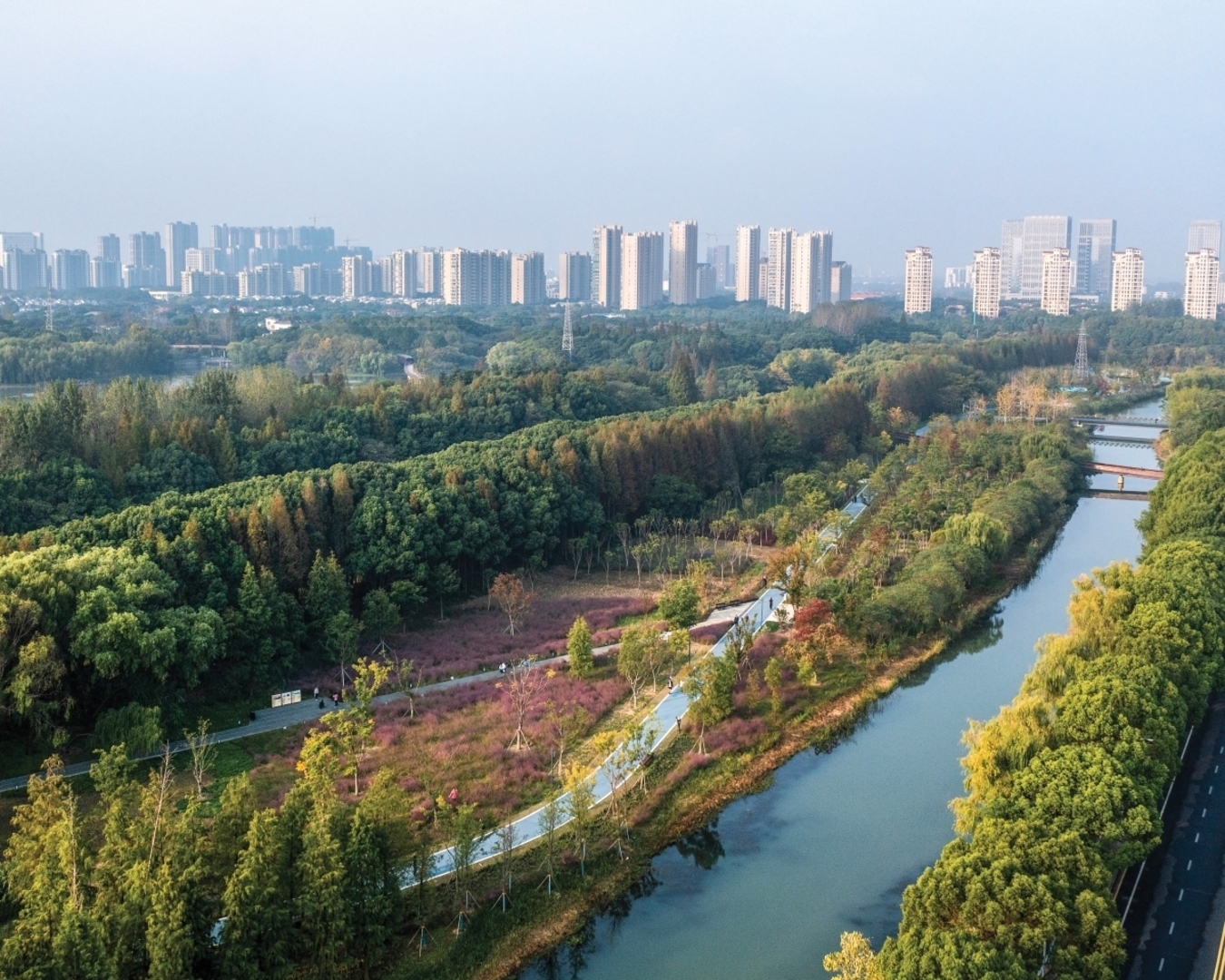
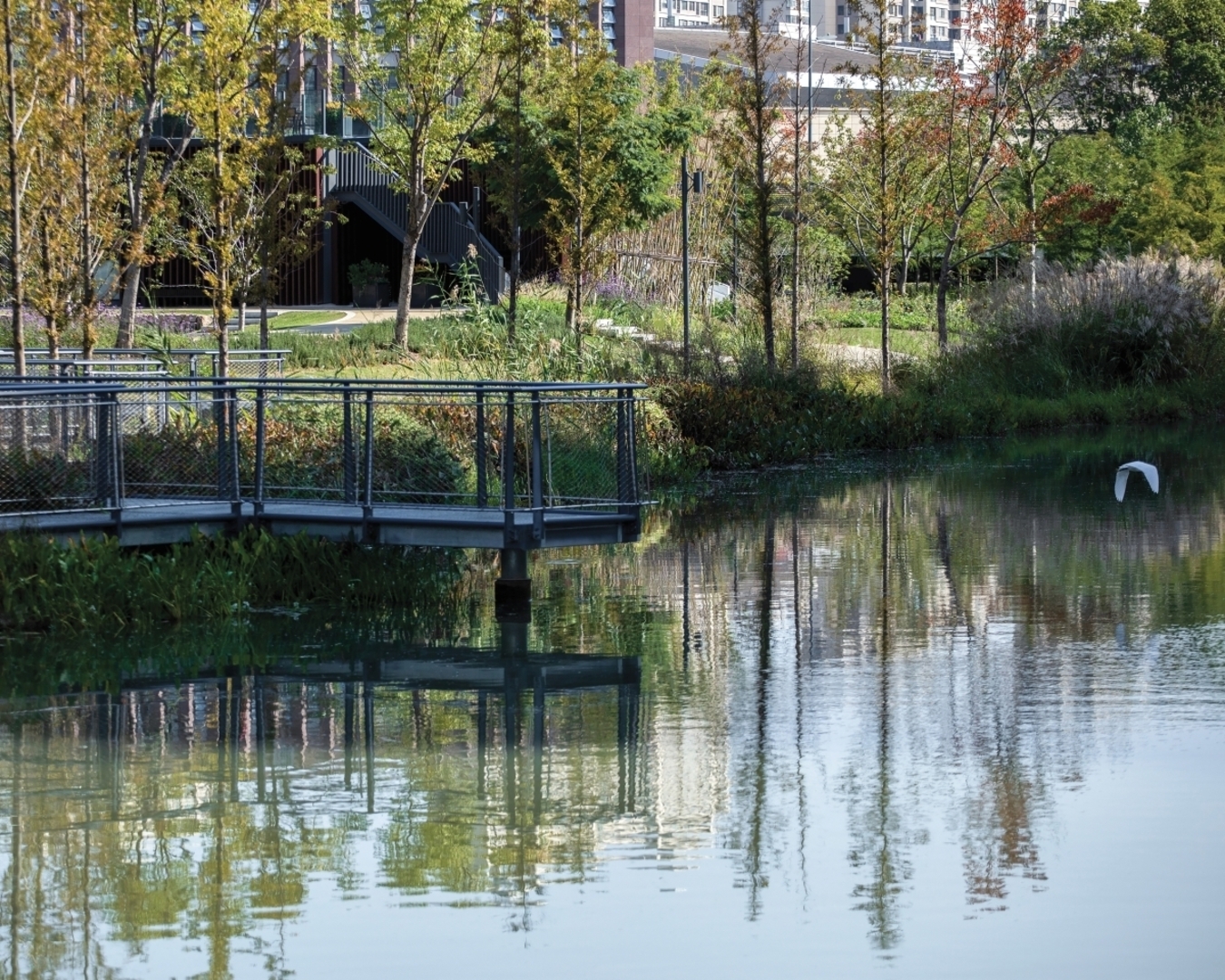
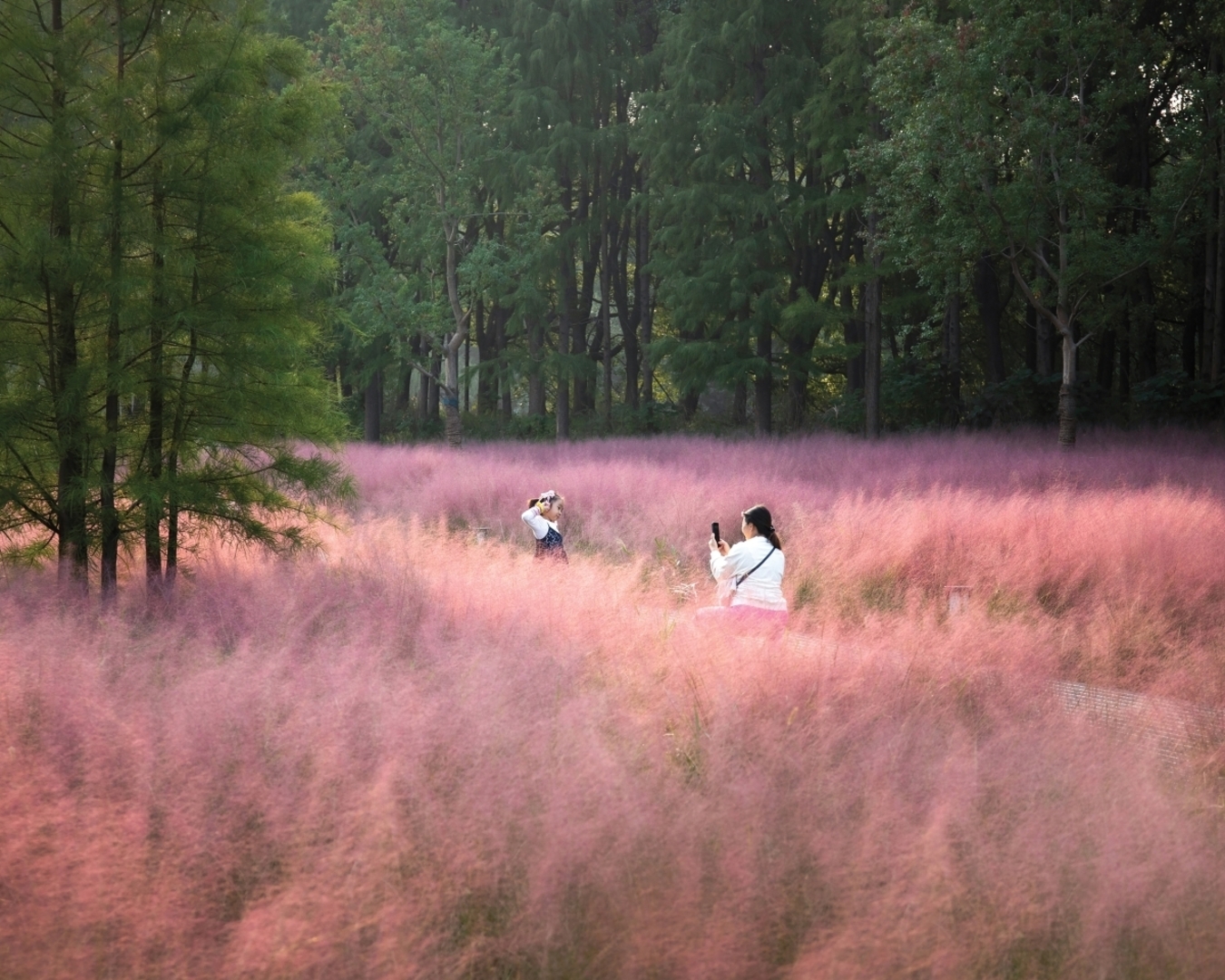
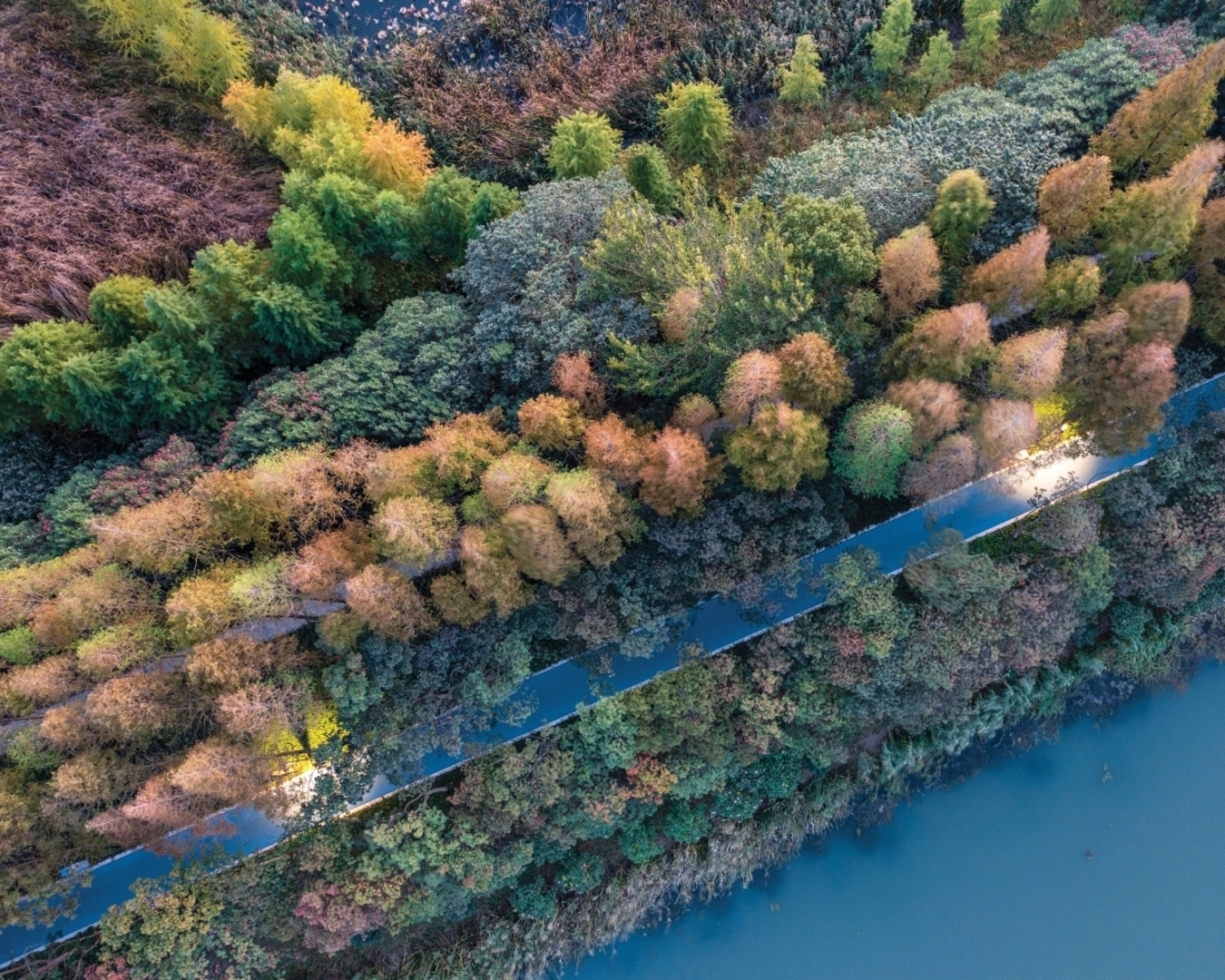
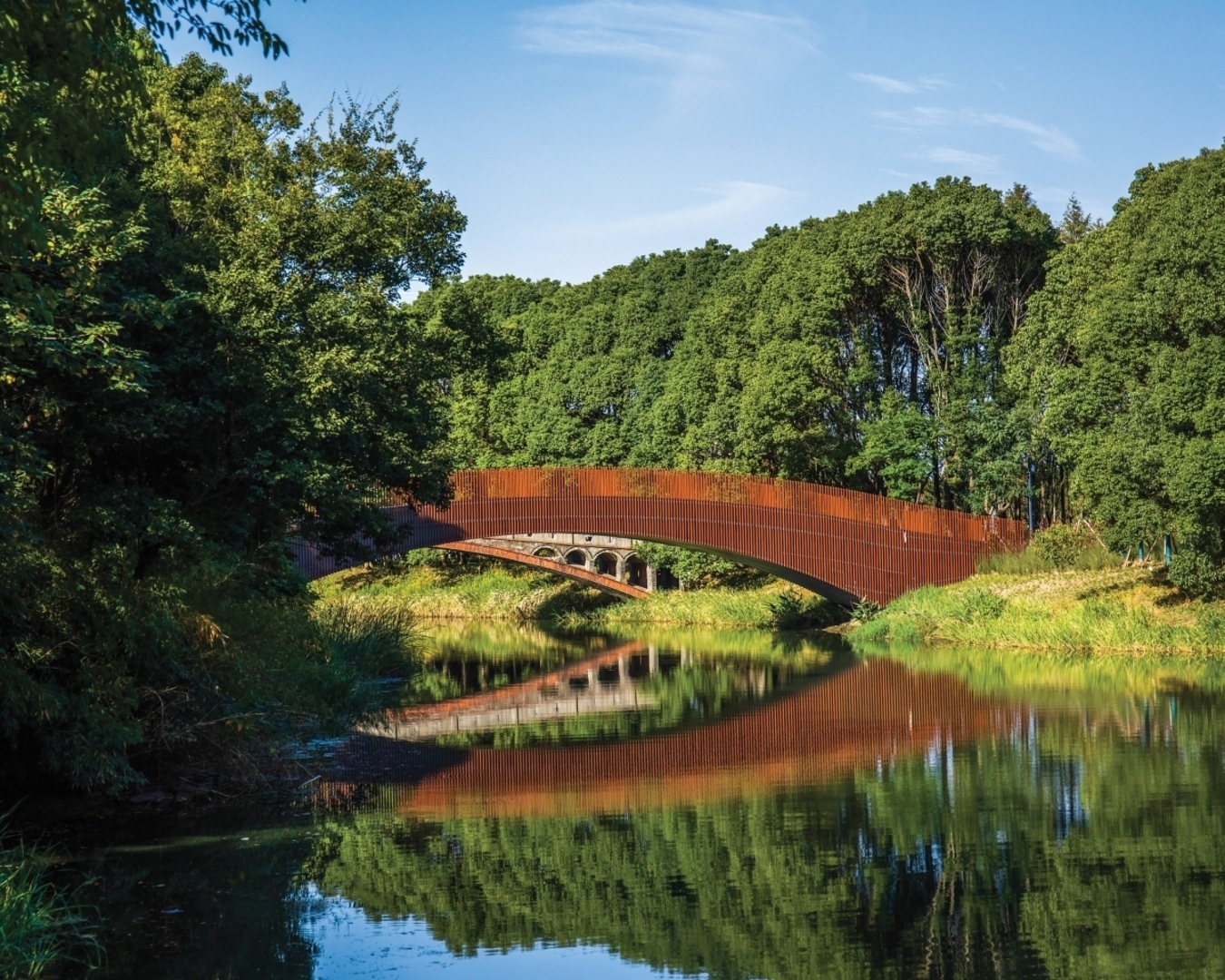
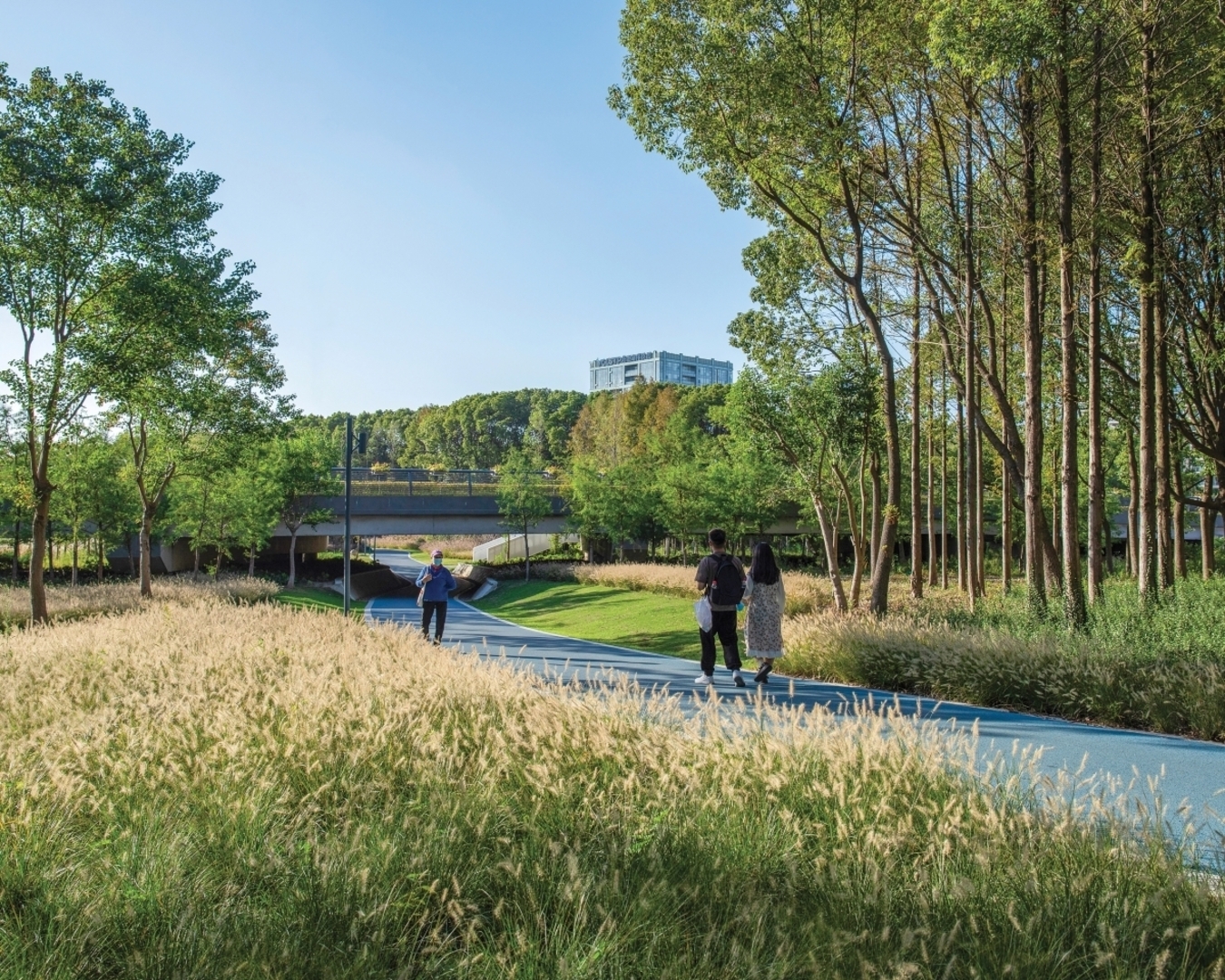
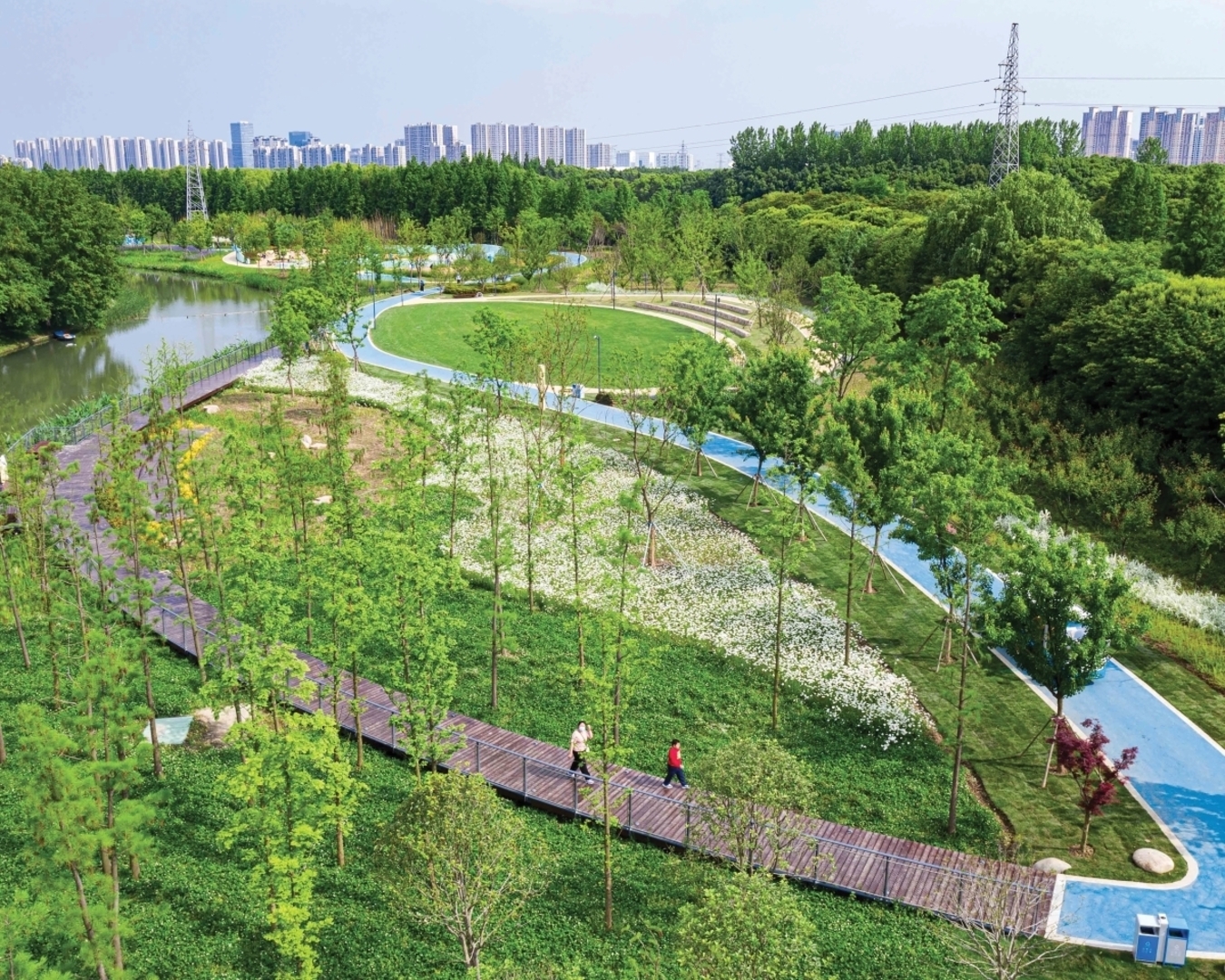
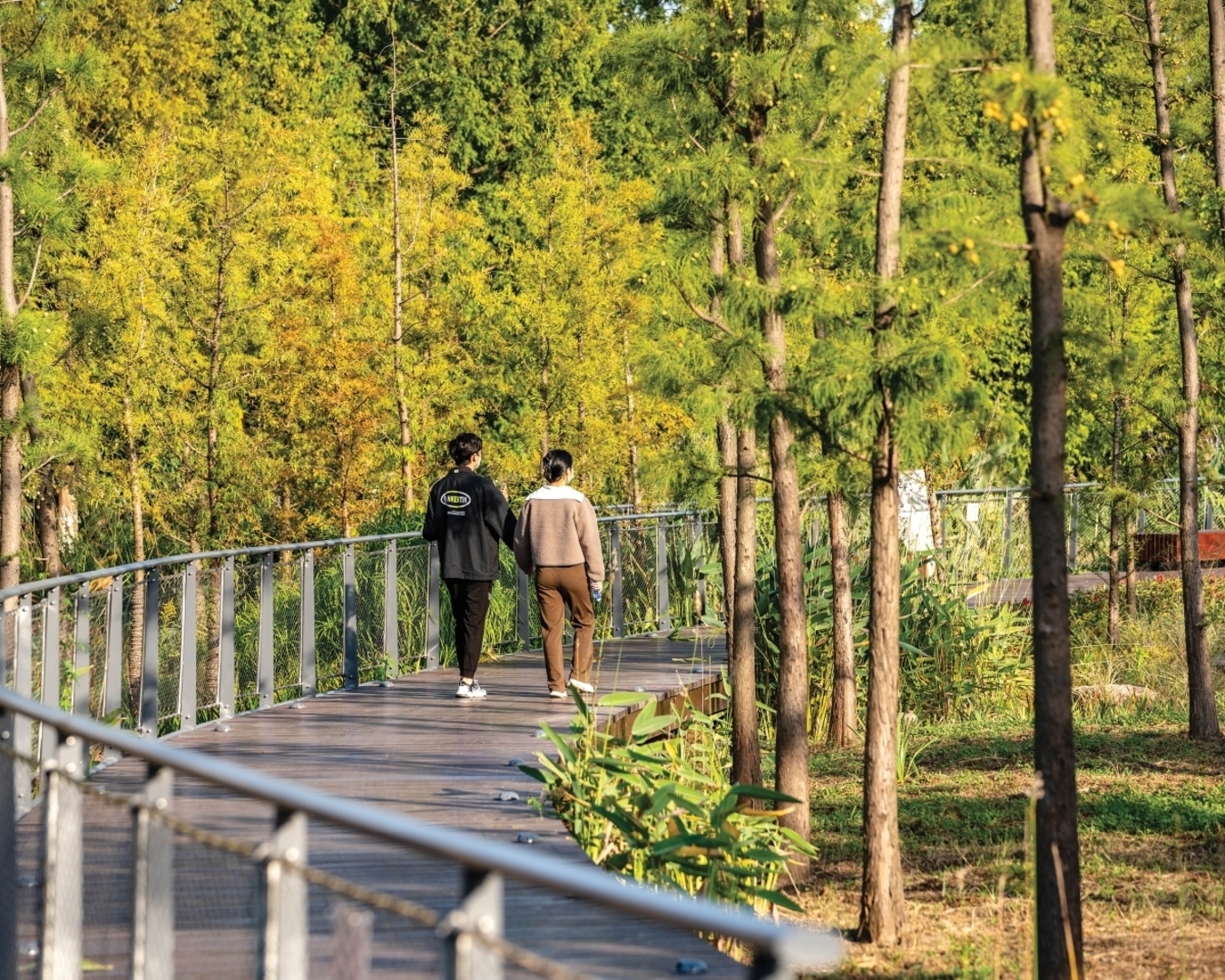

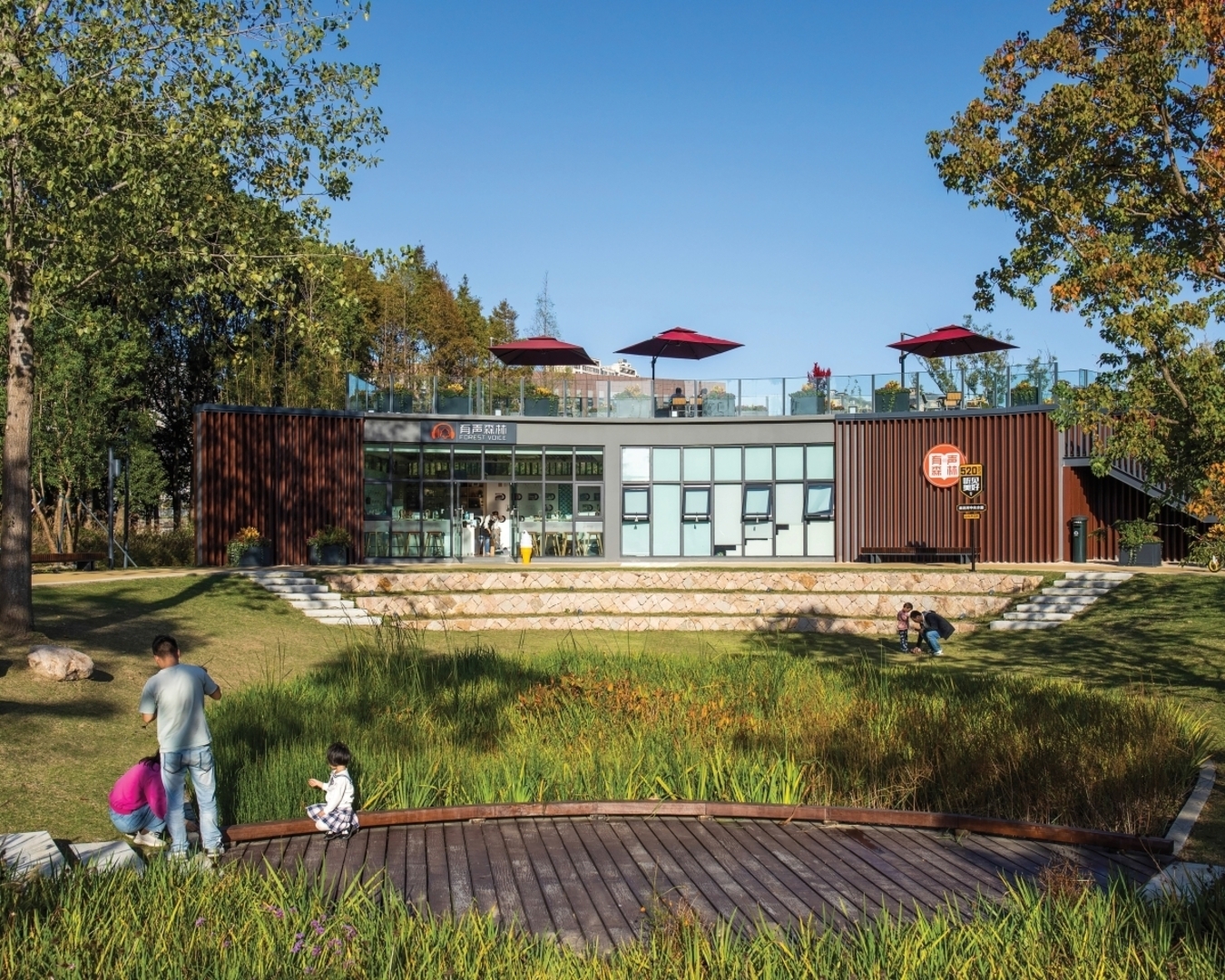
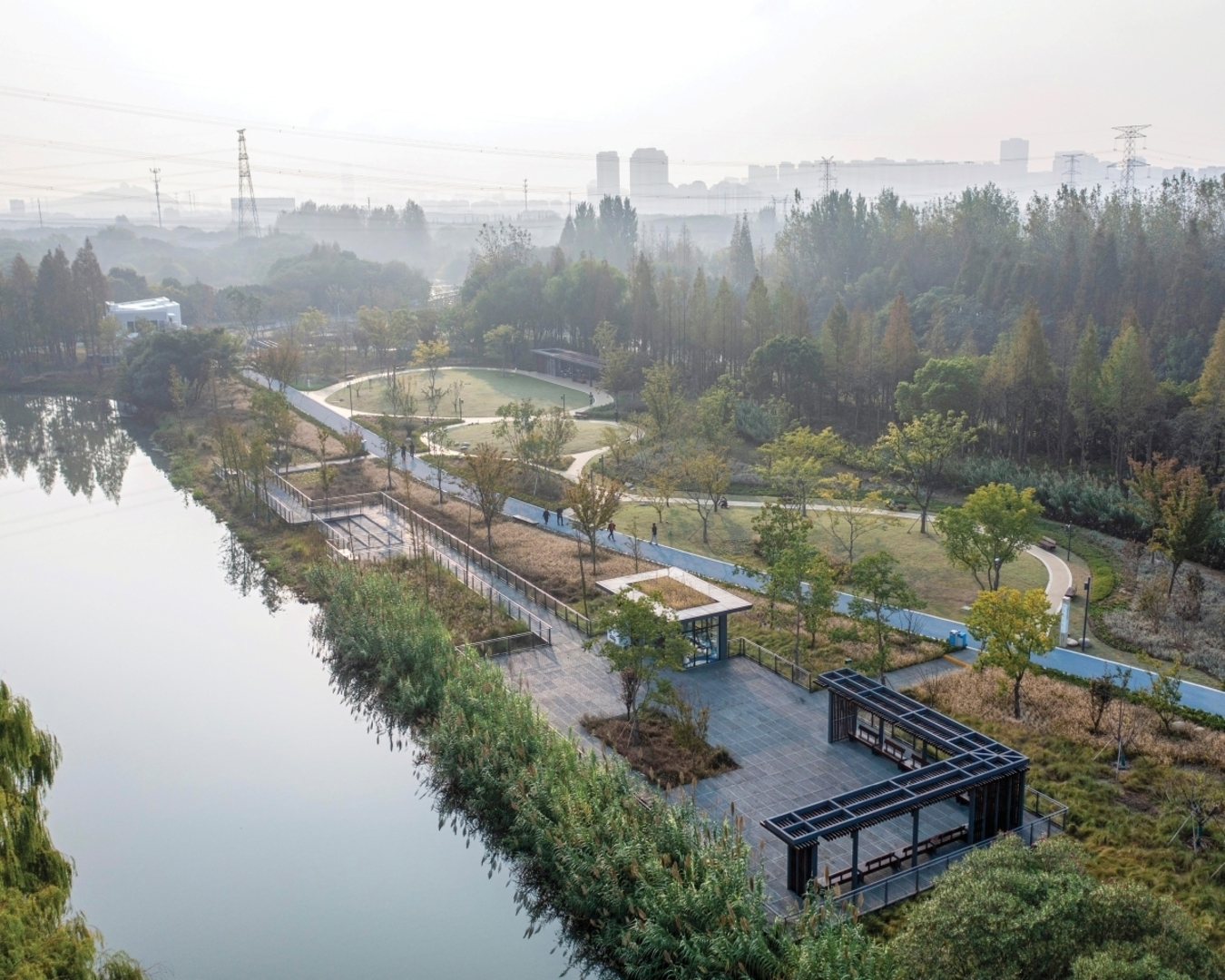
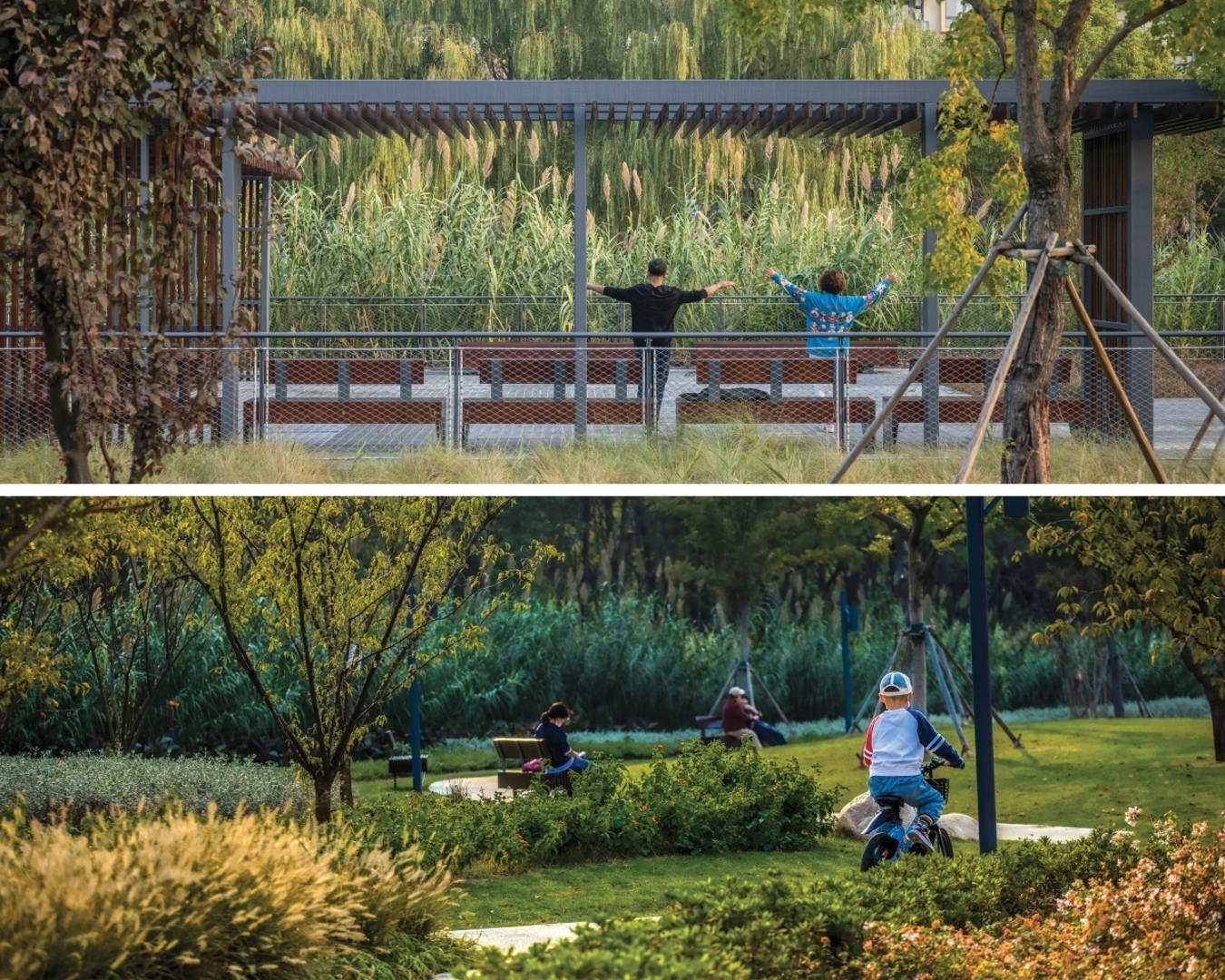
Project Name: Kunshan Miaojing River: From a Hidden Treasure to Ecological Infrastructure
Client/ Organizaton: Kunshan City Construction Investment Development Company
Designer: PLAT Studio
Use: Civic / Park
Year of Design: 2017
Year(s) of Construction: 2017-2022
Awards: 2019 The American Society of Landscape Architects - the Northern California Chapter (ASLA-NCC), Award of Excellence、2023 World Landscape Architecture (WLA), Built - Large Design
Photo Credit: Zhiyi - PLAT, KCID
Collaborating Consultants: Ecological Consultant- Great Ecology, Construction Drawings- LDG
